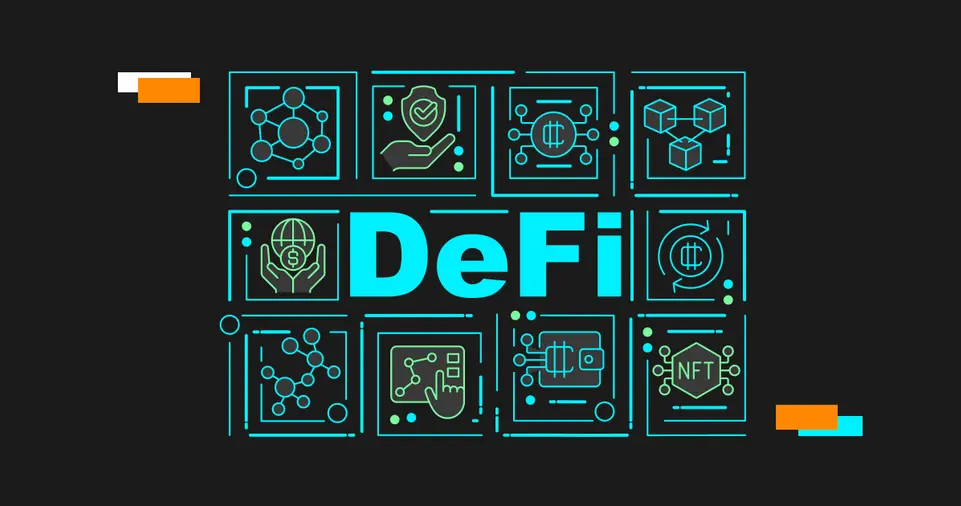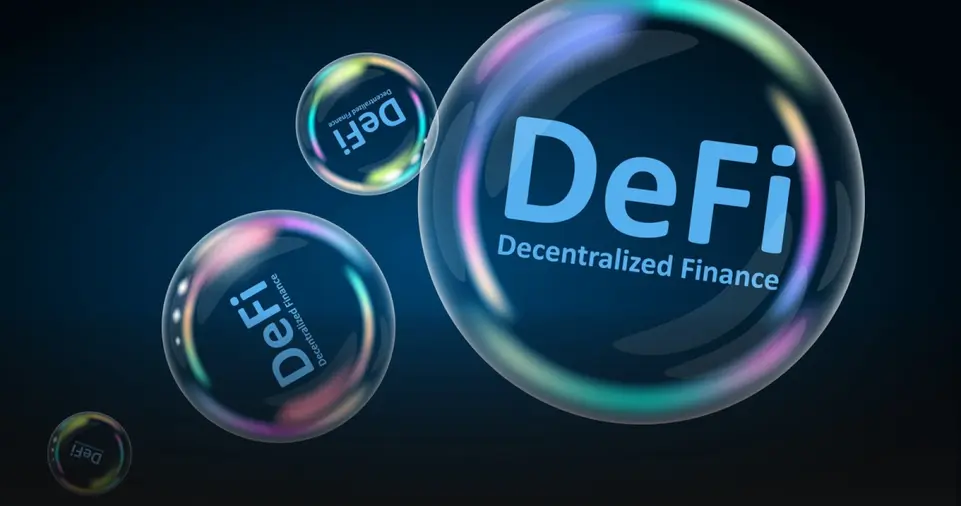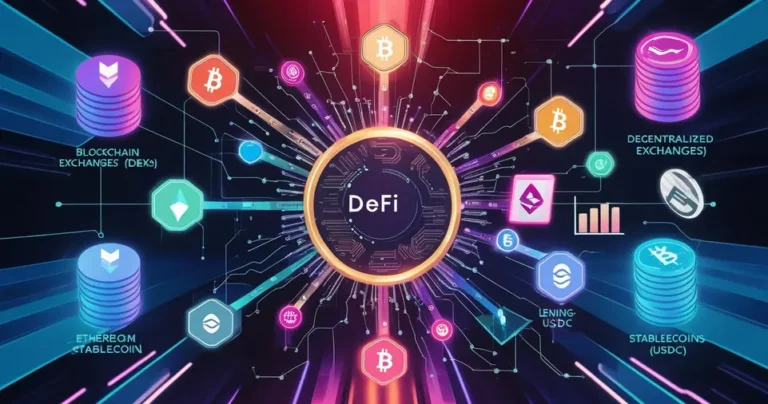Decentralized Finance, or DeFi, has quickly become one of the most transformative concepts in the financial world.
By utilizing blockchain technology and smart contracts, DeFi aims to create an open, permissionless, and decentralized alternative to traditional financial systems.
Whether you’re a newcomer to the world of cryptocurrencies or an experienced trader, understanding how to use DeFi tools can unlock a whole new level of financial freedom and opportunities.
What is Decentralized Finance (DeFi)?
DeFi refers to a set of financial services and applications that operate without central intermediaries such as banks, brokers, or insurance companies.
Instead, DeFi uses blockchain technology, particularly Ethereum, to enable peer-to-peer transactions, lending, borrowing, investing, and trading.
The key feature of DeFi is that it’s permissionless and trustless, meaning anyone can participate, and the system operates based on smart contracts rather than relying on a trusted third party.
The Key Components of DeFi

DeFi encompasses a broad range of financial services, and understanding the core components is essential to using DeFi tools effectively.
These components include:
Smart Contracts
Smart contracts are self-executing contracts with the terms of the agreement directly written into lines of code.
These contracts automatically execute when the conditions specified in them are met. In DeFi, smart contracts eliminate the need for intermediaries and ensure transparency, trust, and efficiency.
Decentralized Exchanges (DEXs)
A decentralized exchange (DEX) allows users to trade cryptocurrencies without relying on a centralized authority.
Instead of order books held by a single entity, DEXs use liquidity pools to facilitate trades. Popular DEXs include Uniswap, SushiSwap, and PancakeSwap.
Stablecoins
Stablecoins are cryptocurrencies pegged to a stable asset like the US Dollar, making them less volatile than other cryptocurrencies.
Popular stablecoins like Tether (USDT), USD Coin (USDC), and DAI are widely used in DeFi platforms for transactions, lending, and earning interest.
Lending and Borrowing Platforms
One of the most popular uses of DeFi is for lending and borrowing. Platforms like Aave and Compound allow users to lend their assets to others in exchange for interest or to borrow assets by collateralizing their own cryptocurrencies.
This system operates directly on the blockchain without needing traditional financial intermediaries.
Yield Farming and Liquidity Mining
Yield farming and liquidity mining are ways for users to earn returns by providing liquidity to DeFi platforms.
Liquidity providers deposit their tokens into liquidity pools and, in return, receive rewards in the form of additional tokens.
Insurance in DeFi
DeFi has also introduced decentralized insurance platforms, which allow users to insure their digital assets against hacks, failures in smart contracts, or other risks.
ALSO READ: How to Research and Evaluate New Cryptocurrency Projects
How DeFi Tools Work
To truly understand DeFi, it’s important to know how these tools work in practice.
Here’s a breakdown of how some of the most popular DeFi tools function:
| DeFi Tool | Description | How it Works |
|---|---|---|
| Decentralized Exchanges (DEX) | Platforms that allow users to trade cryptocurrencies directly with each other without a central authority. | Users connect their wallets (such as MetaMask or Trust Wallet) to the DEX. Trades occur using liquidity pools where buyers and sellers interact without intermediaries. |
| Stablecoins | Cryptocurrencies pegged to stable assets, offering price stability. | Stablecoins are pegged 1:1 to assets like the USD or gold. They are used in transactions and DeFi applications as a stable medium of exchange. |
| Lending Platforms | Platforms where users can lend and borrow digital assets. | Users deposit assets into lending platforms like Aave or Compound, earning interest on their deposits. Borrowers use their crypto as collateral to borrow other assets. |
| Yield Farming & Liquidity Mining | A way to earn rewards by providing liquidity to a platform. | Users provide liquidity to decentralized protocols (e.g., Uniswap), and in return, they earn rewards in the form of additional tokens or fees from the liquidity pool. |
| Decentralized Insurance | Platforms offering decentralized insurance for digital assets and smart contracts. | Platforms like Nexus Mutual use smart contracts to pool funds from users and offer payouts in case of specific events such as hacks or protocol failures. |
Using DeFi Tools: Step-by-Step Guide

Now that we have an overview of DeFi tools and their functionality, let’s explore how to use these tools to start engaging with decentralized finance.
Here’s a step-by-step guide on using DeFi tools:
Step 1: Set Up a Digital Wallet
To interact with DeFi platforms, you need a digital wallet. Popular options include MetaMask, Trust Wallet, and Coinbase Wallet.
These wallets allow you to securely store your cryptocurrency and interact with DeFi applications.
- Download and install the wallet: Choose a wallet that supports DeFi platforms (e.g., MetaMask).
- Create a wallet: Set up a new wallet and make sure to write down your recovery phrase.
- Deposit funds: Transfer cryptocurrency into your wallet to start using DeFi tools.
Step 2: Understand the Risks
Before diving into DeFi, it’s essential to understand the risks involved:
- Smart contract bugs: Code errors can lead to loss of funds.
- Impermanent loss: When providing liquidity to a pool, the value of assets can fluctuate, resulting in losses.
- Regulatory risks: As DeFi is an emerging space, future regulations could affect the tools you use.
Step 3: Using Decentralized Exchanges (DEXs)
To trade cryptocurrencies on DEXs, follow these steps:
- Connect your wallet: On platforms like Uniswap or PancakeSwap, connect your wallet using the “Connect Wallet” button.
- Choose your tokens: Select the tokens you wish to swap, like ETH for USDC.
- Adjust slippage: Depending on the liquidity, you may need to adjust slippage tolerance (the percentage of price difference you’re willing to accept).
- Confirm transaction: Review the transaction details, then approve the trade on your wallet.
Step 4: Yield Farming and Earning Interest
Yield farming and liquidity mining are common DeFi strategies to generate passive income:
- Select a liquidity pool: Choose a liquidity pool (e.g., ETH/USDT) on platforms like Uniswap or PancakeSwap.
- Deposit tokens: Deposit an equal amount of both tokens into the liquidity pool.
- Earn rewards: The platform will reward you with transaction fees or additional tokens in return for providing liquidity.
Step 5: Lending and Borrowing
Lending and borrowing platforms like Aave and Compound allow you to earn interest or access credit without needing a bank.
- Deposit assets: Choose the asset you want to lend, such as ETH or USDC, and deposit it into the platform.
- Earn interest: In return, you’ll earn interest on your deposited assets.
- Borrow assets: If you need to borrow, provide collateral (e.g., ETH) and take out a loan in stablecoins or other assets.
Benefits of DeFi

DeFi offers several advantages over traditional finance, including:
- Accessibility: DeFi platforms are open to anyone with an internet connection, allowing people worldwide to access financial services.
- Lower Fees: Since DeFi eliminates intermediaries like banks, transaction fees can be significantly lower.
- Transparency and Security: Transactions on blockchain-based DeFi platforms are transparent and secured by cryptography.
- Control over Funds: Users have full control over their assets without needing third parties to manage them.
- High Returns: DeFi offers opportunities for higher returns, especially through yield farming and liquidity mining.
Challenges and Risks in DeFi
While DeFi offers many opportunities, there are also challenges to be aware of:
- Smart Contract Vulnerabilities: Bugs in smart contracts can lead to financial losses or hacks.
- Regulatory Uncertainty: Governments may introduce new regulations that affect DeFi platforms and tokens.
- Liquidity Risk: Some DeFi platforms may not have enough liquidity to process large transactions efficiently.
- Complexity: For beginners, DeFi tools can be intimidating and hard to navigate without a proper understanding of the technology.
The Future of DeFi
The future of DeFi looks promising as innovation continues in the space.
We’re seeing improvements in scalability, user experience, and the development of more complex financial products.
However, regulation and security will be significant factors in the widespread adoption of DeFi.
ALSO READ: How to Avoid Common Mistakes in Crypto Trading as a New Investor
Conclusion
Decentralized Finance is a revolutionary movement that aims to transform the financial industry by removing intermediaries and enabling more accessible, secure, and efficient financial services.
By understanding and utilizing DeFi tools like decentralized exchanges, lending platforms, and yield farming, you can take full advantage of what DeFi has to offer.
Although the space is still evolving, and risks are involved, DeFi presents an exciting opportunity to participate in a global financial ecosystem that’s permissionless, transparent, and innovative.
Whether you’re looking to trade, lend, borrow, or earn passive income, DeFi tools offer a wide range of possibilities to explore.
As the DeFi ecosystem grows, staying informed and cautious can help you navigate it successfully.











